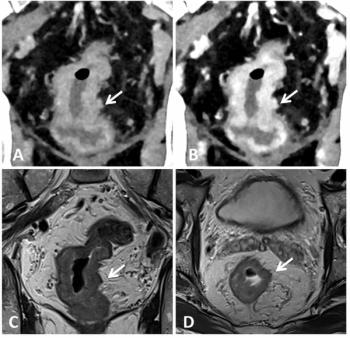
Claustrophobia in MRI: Open Scanner v. Wide-Bore
Open design, wide bore, noise reduction MRI machines can ease claustrophobia. Do patients prefer them; are they cost effective; do they improve image quality?
Claustrophobia affects up to 15 percent of all people, which can be a major problem for those needing an MRI study. Fear of suffocation and restriction prohibits about two million people with claustrophoba from undergoing MR imaging each year. New machines, including one with an open design and another with a wide bore and noise reduction seem to help, but which type is better, and what do patients themselves prefer?
Researchers from Berlin, Germany are trying to find that out, in the CLAUSTRO trial, described recent study in a protocol published in BMC Medical Imaging.
According to the authors, more than 80 million MRI procedures are performed annually, but 1-15 percent of all patients (mean 2.3 percent) scheduled for the imaging procedure, suffer from claustrophobia, making the procedure impossible or requiring the use of conscious sedation. They estimate that about 2 million patients don’t get the procedure or terminate it early because of this fear of closed spaces.
Newer, closed MRI scanners which are short and wide bore with noise reduction, have been shown to minimize claustrophobic reactions by a factor of up to three. Open MRI scanners have helped as well, and the authors wanted to compare these two scanner types.
The study’s goal is partly to determine whether an open MRI scanner could reduce claustrophobic reactions, allowing researchers to image these patients without the need for conscious sedation. In the randomized trial, they also want to compare the rate of claustrophobic reactions and clinical utility in the two different scanner types: a closed, short-bore scanner with 97 percent noise reduction, and an open MRI scanner, looking at cost-effectiveness, patient preference and image quality. While randomized, if a patient cannot tolerate the MRI machine they are assigned to, they will switch to the other scanner type. Those who cannot tolerate either will be sedated.
Investigators plan to recruit 174 patients, half for each scanner, for patients needing MRI of the head, spine or shoulder. The study is sponsored by investigators, with no industry financing.
For other, related research, see
Newsletter
Stay at the forefront of radiology with the Diagnostic Imaging newsletter, delivering the latest news, clinical insights, and imaging advancements for today’s radiologists.



























